| If you can't view the email, please click here. |
|
|
|
Winter 2019 Vol. 17 No. 4
|
|
From the Desk of the Editor
Süreya Martha Köprülü
“TPQ’s Winter issue examines global trade dynamics—from US-China tensions to the renegotiation of NAFTA to US tariff threats towards the EU. Chief among the issues generating a high degree of economic uncertainty is the US-China trade conflict and the magnitude of the emerging global fallout. Major changes are already afoot—namely a shift in global supply chains—which are changing the shape of global trade and impacting businesses.”
“US President Donald Trump's protectionist trade policies—centered on the US’ trade deficit problem—have alienated traditional allies such as the EU and Canada, unsettled financial markets, and threatened to undermine the postwar rules-based trading system. Trump’s blend of nationalism and protectionism could yield multiple ripple effects on the international scene, setting trade on a dangerous retaliatory path. Against this backdrop, this issue’s authors evaluate global trade on the edge, providing insight into the key issues that will dominate the agenda in 2019 and beyond.”
|
|
|
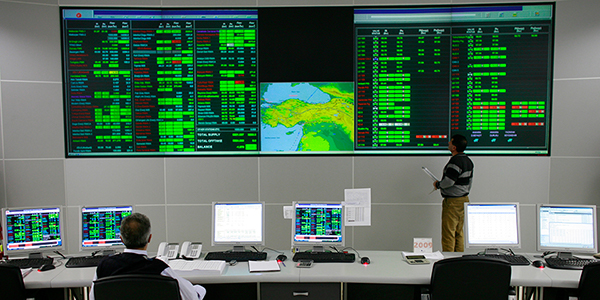 |
Turkey’s Trade Strategies in the New Digital Age
Ruhsar Pekcan
“As the Turkish Ministry of Trade, we are taking a proactive approach in employing necessary strategies for reaping the benefits of digitalization. From domestic commerce infrastructure to customs procedures, incorporating an enhanced level of digitalization is one of our key priorities.”
“It is crucial for Turkish companies to effectively use e-commerce opportunities domestically as well as for foreign trade. Citizens and companies in Turkey have been rapidly adapting to shopping and trading online. In addition, being a crossroads-country, Turkey has great potential for serving as a logistics hub with respect to e-commerce.”
“Turkish foreign economic relations have always rested on the premise of international cooperation, as well as free and fair trade. While Turkey is closely monitoring developments regarding protective measures and also engaging in them to the extent that it is necessary, the core of the Turkish position is unchanged.”
|
|
|
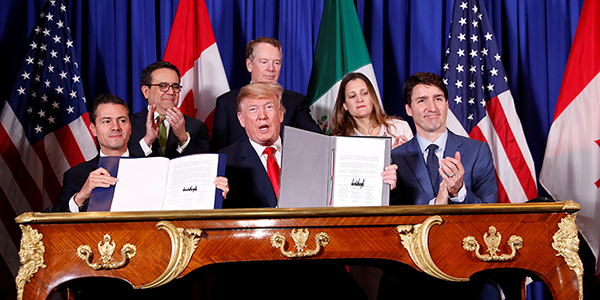 |
From NAFTA to the USMCA as Seen From the Southern Partnership
Antonio Ortiz-Mena & Earl Anthony Wayne
“If one looks at the goals of promoting trade, investment, and the implementation of transparent and stable rules, NAFTA has been enormously successful. Trade between the US, Mexico, and Canada increased from just over 300 billion USD in 1993 to more than 1.3 trillion USD in 2017. To illustrate, US trade with NAFTA exceeds trade with the entire European Union and almost doubles that with China.”
“The new agreement contains 34 chapters, 12 more than NAFTA. It updates previously existing chapters and adds others to ‘modernize’ the agreement. Modernization was relatively easy to achieve because negotiators could work from the basis of the earlier Trans-Pacific Partnership negotiations. The negotiators incorporated deeper labor and environment commitments and stronger dispute settlement provisions for them. The most controversial issues in the negotiation were already in the original agreement, especially regarding the rules of origin for the automotive sector, agriculture, mechanisms for settling disputes, in addition to the ‘sunset clause.’”
“US, Mexican, and Canadian business and farm organizations welcome the new agreement because it preserves much of NAFTA and would restore certainty to the North American market. In Mexico, then President-elect Andres Manuel López Obrador was pleased with the outcome. He is believed to support the agreement in part because it will provide certainty for some 80 percent of Mexico’s exports and allow him to focus on domestic reforms in Mexico. He also insisted on a weaker energy chapter in the agreement, which assures Mexican sovereignty in that sector.”
|
|
|
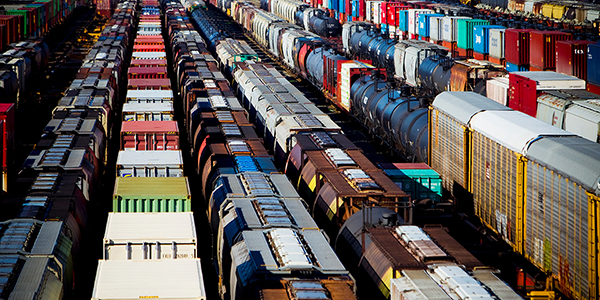 |
How Trade and Aid Can Help Deliver Sustainable Development Goals
Frans Lammersen & William Hynes
“The 2030 Development Agenda agreed by the United Nations General Assembly in 2015 outlines 17 SDGs and 169 associated targets, which together aim to bring a more holistic approach to goal-based development.”
“Trade can be an important tool for supporting gender equality and empowering all women and girls as called by in SDG 5. The 2017 Joint Declaration of 118 WTO Members on Trade and Women’s Economic Empowerment acknowledges that inclusive trade policies can contribute to advancing gender equality and women’s economic empowerment. Strengthening the contribution of trade liberalization to gender equality is not only needed for equity concerns, but also for long-term growth prospects. Closing the gender gap could potentially increase the size of the global economy by 2.1 trillion USD in 2025.”
“Trade economists will need to move away from their narrow focus on trade policy and start to work with other disciplines to help find solutions for a wider range of challenges. Failure to do so would render trade ineffective as a means of delivering the 17 goals of the 2030 Sustainable Development Agenda.”
|
|
|
 |
Trade Wars: Strong-Arm Tactics by the Trump Administration
Bozkurt Aran
“President Trump gave the impression that he would embark on a systemic denial of the rules-based trading system by questioning the authority of the WTO. However, President Trump’s opening salvos clearly showed that he intends to exploit the exceptions to the rules inherent in the system that can only be applied in rare cases. The invoking of ‘safeguard’ and the ‘national security’ articles of the WTO agreements to impose additional tariffs to cars and washing machines imported from countries like Canada and NATO allies do not comply with the rationale of why these rules were formulated in the first place.”
“Trade wars or extended tensions among major stakeholders have been disruptive to the world economy in the past and the extensive use of trade as an instrument of coercion has the potential to be highly destructive in the days to come. The very structure of multilateral free trade that took nearly seven decades to develop will be negatively affected, and peacefully dealing with trade issues through the WTO panel system will be under great strain.”
|
|
|
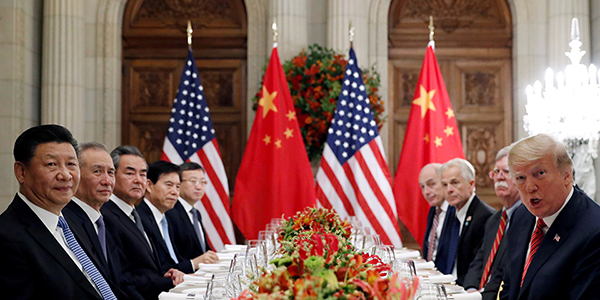 |
Global Trade Disrupted
Marie Kasperek
“It has become increasingly clear that China is at the heart of the US trade strategy. This has spilled over into negotiations and relations with other countries, with the renegotiated NAFTA being a prominent example. A provision added to the new US-Mexico-Canada trade agreement forbids trade deals with ‘non-market’ economies. Accordingly, if one of the partners entered a free trade agreement with China, the other two could leave the pact within six months.”
“The EU, China, and the US account for roughly 50 percent of global economic output. When the three largest global economies are restricting trade flows to one another, these protectionist measures are destined to directly and indirectly affect global growth. Directly, these measures lead to decreasing trade flows between involved countries, as well as increased production costs, which translate into higher prices for consumers. Indirectly, these measures impact business confidence leading to lower investment and higher uncertainty in global financial markets, the interruption of global supply chains, and a shift in asset prices that is likely to affect domestic demand.”
|
|
|
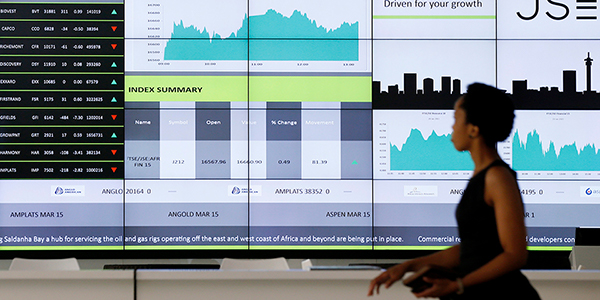 |
Africa’s Priorities Amidst the “Trade Wars”
Peter Draper
“Overall, Africans remain dependent, to varying degrees, on exports of commodities, rendering their terms of trade subject to the vagaries of commodities cycles. While many things determine commodities cycles, economic growth in key demand centers, notably China but also the EU, US, and Japan, remains critical. Therefore, in the short-term, the growth slowdown currently taking shape is of concern, and underscores the longstanding African objective to diversify out of primary production and into manufactures.”
“A WTO without the US would be highly detrimental to the multilateral trading system, so Africans have to seriously engage with US concerns, much as they perceive the US does not take their own concerns seriously. In part, this means supporting the various smaller group, or plurilateral, negotiations underway such as e-commerce, or at least not blocking them by recourse to the consensus convention.”
|
|
|
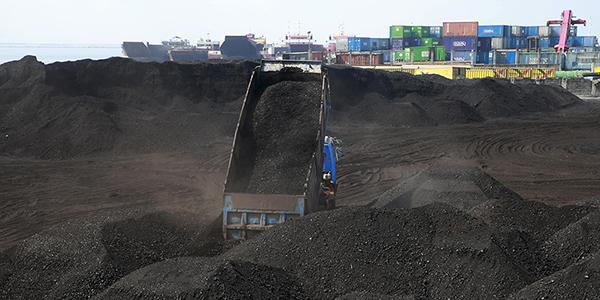 |
Can Trade Advance Climate Action?
Silvia Maciunas
“Regional trade agreements provide more options to address environmental issues within the trading system than the more broadly subscribed multilateral WTO. They are more flexible and can be more responsive to emerging issues but are limited in their geographic scope. Trade agreements contain language addressing the relationship between trade and environment, both aspirationally with respect to sustainable development, and by providing for some exceptions to trade rules.”
“While it is not the responsibility of trade negotiators to drive climate action, it certainly behooves the global community to use all means possible to maintain safe global temperatures. Trade rules should not stand it the way but should advance and support the fight against climate change.”
|
|
|
 |
Wounded but Alive: What the USMCA Means for Canada
Meredith B. Lilly
“Most substantively under the USMCA, new rules of origin for automobiles require 75 percent of vehicles to be produced with North American content, including a 70 percent North American steel and aluminum requirement. In addition, 40-45 percent of the labor used to produce the vehicles must be compensated at 16 USD per hour or higher. These changes represent a major shift from NAFTA’s 62.5 percent rule of origin requirements.”
“As the international trade landscape grows more uncertain, Canada finds itself in a difficult position. Although the conclusion of the USMCA negotiations was welcomed with a collective sigh of relief in Canada, the overall pact is not regarded as an improvement over NAFTA. Ongoing political uncertainty in the US means that the UMSCA’s ratification is likely a long way off, meaning that the investment chill blanketing Canada may not thaw for some time.”
|
|
|
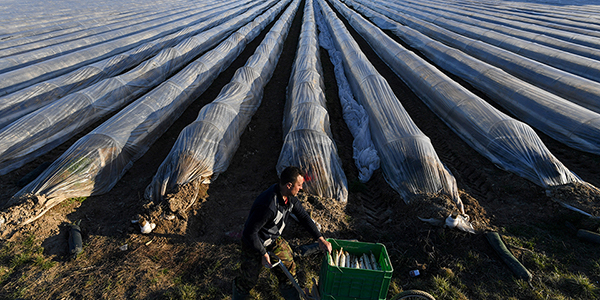 |
Trade, Production, and Emerging Economies: Rising Trends in Agriculture and Manufacturing
Sachin Chaturvedi
“Historically, the production of agricultural implements was dominated by industrialized countries of Western Europe, however, it is now becoming dominated by the emerging industrial countries of Asia, including China. Consequently, these countries are the largest exporters of agricultural implements. The share in production and exports in emerging economies has increased remarkably. They have demonstrated a growing strength in combining their manufacturing prowess with specific knowledge of agriculture.”
“Emerging economies have done remarkably well in the last two decades. They have been able to challenge developed countries’ dominance in the agriculture trade, but to make a leap forward, they need to improve their productivity. Secondly, market access to developed countries is a challenge mainly due to Non-Tariff Barriers/Standards, especially of sanitary and phytosanitary measures.”
|
|
|
Interested in contributing an op-ed to TPQ's blog?
For guidelines click here. |
|
|
The Premium Corporate Sponsor of this Issue
 |
|
|
 |
Phone: +90 212 621 4442 - +90 212 621 9258 Fax: +90 212 531 8718 info@turkishpolicy.com
Click to unsubscribe |
|
|


















